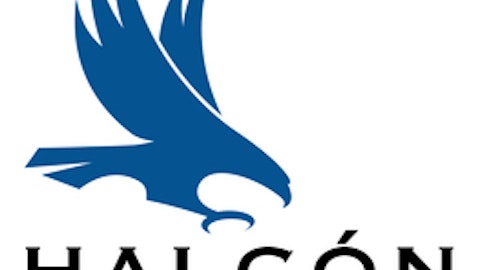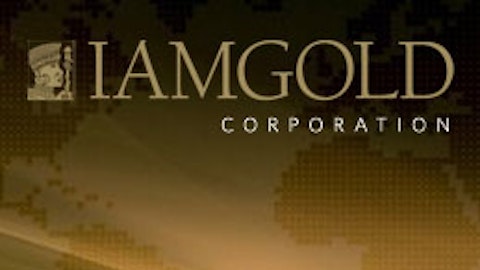Last year, three major diamond players decided they wanted out of the business. Two were successful. Since Rio Tinto plc (ADR) (NYSE:RIO) wasn’t one of them, and now it is saddled with more assets it doesn’t want.
The Oppenheimer family made an exit from the diamond business by selling their 40% stake in De Beers to Anglo American plc (LON:AAL) for $5.1 billion.Diversified miner BHP Billiton Limited (ADR) (NYSE:BHP) sold its stake in the Ekati mine to Dominion Diamond Corp (NYSE:DDC), formerly known as Harry Winston Diamond, for upwards of $550 million. That deal closed earlier this year.
Rio Tinto did not find a buyer for any of its diamond assets. Last Monday, the company announced “it has decided to retain its diamond businesses after concluding a strategic review, which considered a range of options, including divestment.”
That announcement is a bit too casual for those who have not been following the miner’s story. Rio Tinto plc (ADR) (NYSE:RIO) didn’t just consider getting rid of its diamond assets and then decide not to. This company spent over a year trying to figure out how to either get out of the diamond business or to pave a better way forward, but none of its ideas panned out. So, Rio Tinto is basically trapped in diamond business.
Rio Tinto’s diamond businesses
The company has a fully integrated diamond unit that includes mining, cutting and polishing and marketing and sales. Rio Tinto plc (ADR) (NYSE:RIO) owns the Argyle mine in Australia, which is the primary source of pink diamonds. It has a 78% stake in the Murowa mine in Zimbabwe and a 60% stake in the Diavik mine in Canada, with Dominion Diamond Corp (NYSE:DDC) holding the other 40%. Rio Tinto also has the Bunder advanced exploration project in India.
Rio Tinto plc (ADR) (NYSE:RIO) continues to peddle a bullish medium- to long-term forecast for diamonds. And, the company continues to describe its diamond assets as attractive, though Rio Tinto says the businesses do not fit its strategy of “operating large, long-life, expandable assets.”
The diamond business is an unworthy distraction for Rio Tinto. In 2012, it reported a $43 million loss for the diamond unit compared to a $10 million profit in 2011, another bit of data in a chain of poor results.
At its prime, Argyle was good for 20 million to 30 million carats per year, but production has been drastically declining over the past half-decade and Rio Tinto plc (ADR) (NYSE:RIO) is expecting less than 15 million carats this year from all of its operations.
In 2005, the company decided to expand Argyle and develop an underground mine beneath the open pit. This project, which the company hopes will extend the mine’s life until at least 2020, was delayed multiple times and the budget swelled to about $2.2 billion. The underground mine has now opened but full production isn’t expected until 2015.
Rio Tinto’s cleanup efforts
Like BHP Billiton Limited (ADR) (NYSE:BHP), Rio Tinto plc (ADR) (NYSE:RIO) is ready to cut the fat. The company claims it is going to reduce costs and debt and serve up more value for shareholders, but Rio Tinto simply is not having as much luck as BHP Billiton.
According to Reuters, BHP Billiton Limited (ADR) (NYSE:BHP) has sold over $4.6 billion in assets within the past year. Rio Tinto also had a variety of assets for sale, but has only managed to sell the Eagle nickel mine for $325 million.
Dominion Diamond Corp (NYSE:DDC) expressed interest in Rio Tinto plc (ADR) (NYSE:RIO)’s share of Diavik if the price is right, but Rio Tinto’s decision to retain its diamond properties suggests it’s not.
Otherwise, Dominion Diamond Corp (NYSE:DDC) appears in good financial shape to make the purchase. As of the fiscal quarter ended April 30, the company had over $231 million in available cash and Ekati had $65 million and a diamond inventory valued at $127 million. In addition to existing credit agreements, Dominion Diamond Corp (NYSE:DDC) had also arranged some $765 million in credit facilities to purchase Ekati, but then decided to buy the mine with cash.
If the transaction were to happen, Dominion Diamond Corp (NYSE:DDC) would need to deepen its debt but it is still seen as a potentially good opportunity, especially if the diamond market rebounds later this year it expects. But for Rio Tinto it amounts to only a slight lightening of the load.
Among the items Rio Tinto plc (ADR) (NYSE:RIO) wants to sell are coal and aluminum assets, two more fatty divisions that were responsible for over $14 billion in write-downs last year and the departure of Tom Albanese, formerly the company’s CEO.
Put Rio Tinto on watch
In a world where companies are judged by the ability to manage their businesses and meet their goals, Rio Tinto plc (ADR) (NYSE:RIO) would certainly warrant caution. There is so much on this company’s plate that even it doesn’t find appetizing.
Sam Walsh, the new CEO, has assured shareholders that he is going to address the company’s $19 billion debt with proceeds from asset sales.
The company’s track record is a fair reason to be skeptical, but there is another very good reason for skepticism. Other miners, such Vale and Barrick Gold, are also planning to get rid of unwanted assets to shape up their finances.
BHP Billiton’s debt is estimated to have ballooned to record levels — above $30 billion — and the company is pressed to sell assets, some of which compete with items on Rio Tinto’s sale list. But the pools of buyers and capital to make these purchases is very limited. Like BHP Billiton Limited (ADR) (NYSE:BHP), Rio Tinto plc (ADR) (NYSE:RIO) is likely to be stuck with many unwanted assets, which could be a real drag given the weak state of the commodity markets. Investors should hold tight and see whether management is able to steer Rio Tinto or whether the company’s fat portfolio dictates the course.
Michelle Smith has no position in any stocks mentioned. The Motley Fool has no position in any of the stocks mentioned.
The article Rio Tinto Stuck With Diamonds originally appeared on Fool.com.
Michelle is a member of The Motley Fool Blog Network — entries represent the personal opinion of the blogger and are not formally edited.
Copyright © 1995 – 2013 The Motley Fool, LLC. All rights reserved. The Motley Fool has a disclosure policy.






